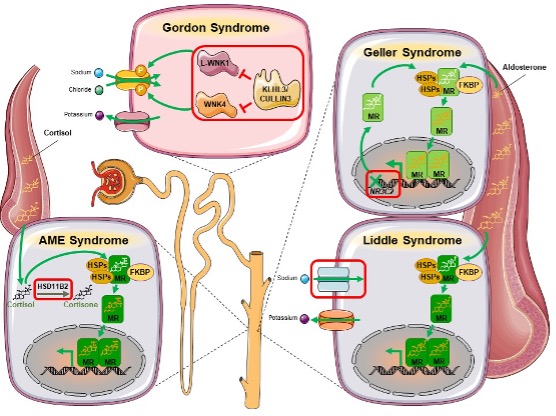
Figure 6. Genetic defects of renal disorders mimicking adrenal diseases. Apparent Mineralocorticoid Excess (AME) syndrome is caused by inactivating genetic defects in the HSD11B2 that encodes for the 11β-hydroxysteroid dehydrogenase type 2 converting cortisol to inactive cortisone. The molecular basis of Gordon syndrome has been ascribed to mutations in the WNK genes expressing proteins that function as serine-threonine protein kinases regulating the expression and action of cation-Cl− cotransporters, such as the sodium chloride cotransporter. Gordon syndrome is also caused by mutations in KLHL3 that encodes for the adaptor protein KLHL3, as well as in CUL3 expressing the ubiquitin scaffold protein CUL3. Geller syndrome has been associated with activating mutations in the NR3C2 that encodes for the mineralocorticoid receptor. Liddle syndrome is caused by mutations in the SCNN1A, SCNN1B, and SCNN1G encoding for the α, β, and γ subunits, respectively, of the epithelial sodium channel (ENaC) of the renal tubule. HSD11B2: 11β-hydroxysteroid dehydrogenase type 2; HSPs: heat shock proteins; FKBP: immunophilin; KLHL3: kelch-like 3; MR: mineralocorticoid receptor; NR3C2: nuclear receptor subfamily 3 group C member 2; WNK: with-no-lysine kinase.
